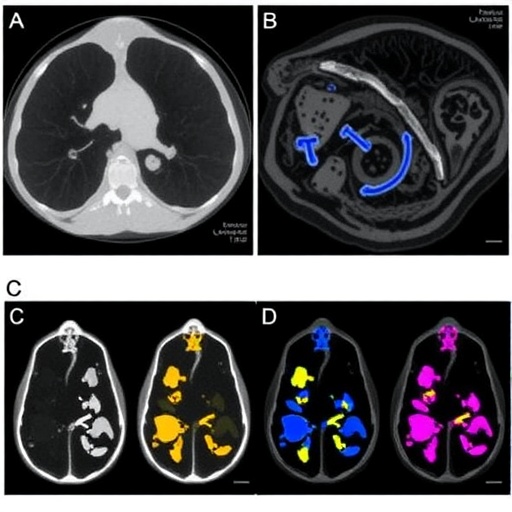KL-6, a high-molecular-weight glycoprotein encoded by the MUC1 gene, is predominantly expressed on type II alveolar epithelial cells. These cells play a pivotal role in the maintenance and regeneration of the alveolar epithelium. Under pathological conditions such as ILD, damage or proliferation of type II pneumocytes leads to the release of KL-6 into circulation, making it an attractive candidate as a serum biomarker that mirrors alveolar epithelial cell injury and aberrant repair processes.
The study in question, conducted retrospectively at a single center, encompasses 147 patients who presented with clinical suspicion of ILD and underwent KL-6 quantification between October 2022 and March 2023. Age and demographic data showed a predominance of elderly males, with a mean age exceeding 77 years and over 97% male participants, underscoring the study population’s characteristics and possibly reflecting disease epidemiology or referral patterns within the center.
Critically, the research identifies a stark contrast in KL-6 serum levels between patients diagnosed with ILD and those manifesting ILA on radiologic evaluation. ILD patients demonstrated markedly elevated KL-6 concentrations, averaging around 969 U/mL, compared to approximately 412 U/mL for the ILA cohort. This difference was statistically significant, underscoring the potential of KL-6 not simply as a biomarker of lung injury but as a discriminant tool between clinically significant disease and imaging-detected abnormalities of uncertain prognostic import.
Beyond diagnostic differentiation, the exploration extended into correlations with pulmonary function metrics, particularly forced vital capacity (FVC). A higher circulating KL-6 level correlating with reduced FVC percentage points to the biological relevance of this biomarker in reflecting disease severity or activity. This relationship propels KL-6 beyond mere disease presence and into the realm of phenotype characterization and potentially prognostication.
The biological underpinnings of KL-6 elevation relate intimately to the pathophysiology of ILD, where chronic inflammation and fibrosis within the interstitium provoke type II alveolar cell hyperplasia and subsequent overexpression of KL-6. This molecular response not only evidences cellular distress but also participates in fibrotic signaling cascades, situating KL-6 at a nexus of disease activity and tissue remodeling.
In contrast, interstitial lung abnormalities frequently represent subclinical or early forms of lung involvement that may not yet evoke the degree of alveolar injury witnessed in established ILD. The relatively lower KL-6 levels in ILA patients suggest a less aggressive or non-progressive pathology, which could have profound implications for patient monitoring strategies and individualized intervention timing.
The implications of incorporating KL-6 measurement into routine clinical practice hold promise. Early differentiation between ILD and ILA can enhance patient stratification, directing therapeutic resources toward those more likely to benefit from intervention while sparing others from unnecessary exposure to aggressive treatment regimens. This biomarker-guided approach exemplifies the principles of personalized medicine and tailored disease management.
Nonetheless, as the authors emphasize, standardization of KL-6 testing protocols and the establishment of universally accepted cutoff thresholds remain essential prerequisites before widespread clinical adoption. Variability in assay techniques and potential confounding by comorbidities must be rigorously addressed in future prospective studies involving larger, more diverse cohorts.
The study’s limitations, including its retrospective design and single-center setting, necessitate cautious interpretation. However, the clear delineation of KL-6’s diagnostic value paves the way for multicenter trials and meta-analyses that could consolidate evidence and guide clinical consensus.
In summary, this research enriches the clinical armamentarium by validating KL-6 as a meaningful biomarker with capacity to discriminate ILD from ILA on the basis of computed tomography findings and pulmonary function data. With further refinement, KL-6 measurement could revolutionize early detection, disease monitoring, and therapeutic decision-making in interstitial lung disorders, heralding a new era of biomarker-driven pulmonary care.
Subject of Research: People
Article Title: Krebs von den Lungen-6 as a biomarker for distinguishing between interstitial lung disease and interstitial lung abnormalities based on computed tomography findings
News Publication Date: 26-Mar-2025
Web References: http://dx.doi.org/10.21037/jtd-24-1833
Keywords: Biomarkers; lung diseases; human; interstitial; MUC1 protein
Tags: alveolar epithelial cell injurycomputed tomography lung imagingdifferentiating ILD from ILAelderly male patients ILDinterstitial lung disease diagnosisKL-6 quantification studyKrebs von den Lungen-6 biomarkerlung condition biomarkerspulmonary medicine researchretrospective study of lung diseasesserum biomarker for lung conditionstype II alveolar epithelial cells





